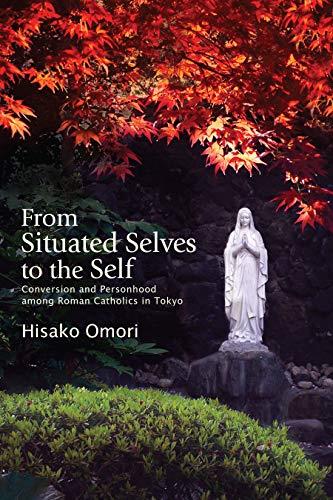

![]() The current issue of the journal Approaching Religion (Summer) is devoted to the Laestadians in northern Finland, Norway and Sweden, known as the largest Christian revivalist movement in secularized Scandinavia. Laestadianism broke off from the Lutheran state churches in Scandinavia in the 19th century (though not in Norway) and is known for its pietistic and communal faith, with members often living apart from mainstream society (although increasingly active in conservative politics) and having large families. While research on the movement has burgeoned in recent years, there continue to be gaps and challenges in the literature, especially on Laestadians in Sweden and diasporas, such as in the U.S. and Canada, as well as the various schisms and splintering of these churches in general. Much of the issue includes issues in researching Laestadianism, but several articles have broader appeal, covering such topics as the churches’ relationship with the native Sami people and how the growing secularization has led to a fascination with Laestadians in Finnish and Finnish-American popular culture. For instance, there have been a series of films, such as the award-winning and popular drama, “Forbidden Fruit,” depicting the struggle of young members breaking away from Laestadian communities and entering secular society (very similar to the recent spate of American movies and documentaries on ex-Hasidic Jews and Amish “apostates”). For more information on this issue, visit: https://journal.fi/ar.
The current issue of the journal Approaching Religion (Summer) is devoted to the Laestadians in northern Finland, Norway and Sweden, known as the largest Christian revivalist movement in secularized Scandinavia. Laestadianism broke off from the Lutheran state churches in Scandinavia in the 19th century (though not in Norway) and is known for its pietistic and communal faith, with members often living apart from mainstream society (although increasingly active in conservative politics) and having large families. While research on the movement has burgeoned in recent years, there continue to be gaps and challenges in the literature, especially on Laestadians in Sweden and diasporas, such as in the U.S. and Canada, as well as the various schisms and splintering of these churches in general. Much of the issue includes issues in researching Laestadianism, but several articles have broader appeal, covering such topics as the churches’ relationship with the native Sami people and how the growing secularization has led to a fascination with Laestadians in Finnish and Finnish-American popular culture. For instance, there have been a series of films, such as the award-winning and popular drama, “Forbidden Fruit,” depicting the struggle of young members breaking away from Laestadian communities and entering secular society (very similar to the recent spate of American movies and documentaries on ex-Hasidic Jews and Amish “apostates”). For more information on this issue, visit: https://journal.fi/ar.
![]() Mark Regnerus’ new book The Future of Christian Marriage (Oxford University Press, $29.95), widens the scope of his work on marriage, the family, and religion from the U.S. to include global Christianity. The sociologist uses survey research and in-depth
Mark Regnerus’ new book The Future of Christian Marriage (Oxford University Press, $29.95), widens the scope of his work on marriage, the family, and religion from the U.S. to include global Christianity. The sociologist uses survey research and in-depth  interviews to understand how young Christians view marriage in Poland, Spain, Mexico, Lebanon, Nigeria, and Russia, which covers the Christian traditions of evangelical Protestantism, Spain, Eastern Orthodoxy, and Roman Catholicism (though neglecting mainline Protestantism). Regnerus’ previous work has found that American Christians are increasingly adopting the liberalized attitudes and lifestyles of other American young people, such as on late marriage, acceptance of divorce, and engaging in premarital sex and even cohabitation. The pace of young Christians’ acceptance of these changes surrounding marriage is slower in these countries (especially in Poland and Nigeria), but Regnerus sees a growing acceptance of marriage as a “capstone” of self-development rather than as a “foundation” for future formation.
interviews to understand how young Christians view marriage in Poland, Spain, Mexico, Lebanon, Nigeria, and Russia, which covers the Christian traditions of evangelical Protestantism, Spain, Eastern Orthodoxy, and Roman Catholicism (though neglecting mainline Protestantism). Regnerus’ previous work has found that American Christians are increasingly adopting the liberalized attitudes and lifestyles of other American young people, such as on late marriage, acceptance of divorce, and engaging in premarital sex and even cohabitation. The pace of young Christians’ acceptance of these changes surrounding marriage is slower in these countries (especially in Poland and Nigeria), but Regnerus sees a growing acceptance of marriage as a “capstone” of self-development rather than as a “foundation” for future formation.
Leading to an overall pattern of late marriage and uncertainty regarding the institution, the capstone view of marriage is a Western import, though it and other changes are mediated through different religious and cultural contexts—from the high prevalence of short-term marriages and divorce in Russia to the strong sanction against cohabitating in Lebanon. Regnerus finds that explaining the effect that religious commitment has on strengthening marriage is best explained by the “moral communities” theory, where the surrounding beliefs and values support marriage rather than the “embattled-and-thriving” theory, which argues that opposition from the surrounding society strengthens the resolve and beliefs in Christian marriage. He takes off his sociologist hat toward the conclusion of the book, where he recommends measures and initiatives to strengthen Christian marriage.

![]() In her new book, From Situated Selves to the Self: Conversion and Personhood among Roman Catholics in Tokyo (SUNY Press $95), Hisako Omori, a Japanese scholar trained in Canada, gives us a glimpse of the lives of Catholics in Tokyo, and an understanding of how the faith has endowed them with a new sense of self, especially among the Catholic women. In her ethnographic study of the two most active parishes and a charismatic group in central Tokyo, Omori finds that baptism has liberated those devout Catholic women from the traditionally assigned gender images and roles in society by forming a new relationship with God. Deep-seated neo-Confucius values in Japanese society require people to constantly evaluate and shift one’s social position and actions in a given situation. Therefore, one’s sense of self is often “relational” because it is determined by the people around the individual. However, Omori points out, by converting to Catholicism, the focal point of the authority changes from the people in society to God, a higher authority to the people and society. By having God as the pivot of one’s life, self-images imposed by society pose less importance to those women, and a new self is formed with God in the center and aligned with Catholic values.
In her new book, From Situated Selves to the Self: Conversion and Personhood among Roman Catholics in Tokyo (SUNY Press $95), Hisako Omori, a Japanese scholar trained in Canada, gives us a glimpse of the lives of Catholics in Tokyo, and an understanding of how the faith has endowed them with a new sense of self, especially among the Catholic women. In her ethnographic study of the two most active parishes and a charismatic group in central Tokyo, Omori finds that baptism has liberated those devout Catholic women from the traditionally assigned gender images and roles in society by forming a new relationship with God. Deep-seated neo-Confucius values in Japanese society require people to constantly evaluate and shift one’s social position and actions in a given situation. Therefore, one’s sense of self is often “relational” because it is determined by the people around the individual. However, Omori points out, by converting to Catholicism, the focal point of the authority changes from the people in society to God, a higher authority to the people and society. By having God as the pivot of one’s life, self-images imposed by society pose less importance to those women, and a new self is formed with God in the center and aligned with Catholic values.
Omori further examines the situations surrounding these Catholic women in Tokyo and introduces their tactful ways of maneuvering in Japanese society. The Catholics were once persecuted in the history of Japan and are still a minority religious faith. The newly formed self-image gives a new sense of self with more power to the converts. However, Catholic practices and values are often seen as contradicting the traditional values and practices in Japan. Because of that, these women have faced many conflicts and stigma which can affect the entire family. Omori finds that some women hide their religious identity. even from their loved ones to accommodate themselves to family duties and societal expectations. Nevertheless, those women can be powerful agents to spread the gospel to their family members. Due to gender roles imposed by Japanese society, and also the public image of Catholicism, men tend to face a high hurdle in becoming Christians, converting to Catholicism after retirement and on their deathbed, often under the influence of Catholic women. Omori also discusses how the Catholic Bishops’ Conference of Japan has recognized those issues that Catholics in Japan may face and has published a guide that has sought to compromise with traditional practices related to Shinto and Buddhism. The Second Vatican Council’s declaration toward non-Christian religion has a great impact on more open and inclusive practices among Catholics, making it easier for Catholics to live in Japan while fulfilling their social obligations—reviewed by Ayako Sairenji, a Tokyo-based writer and researcher.